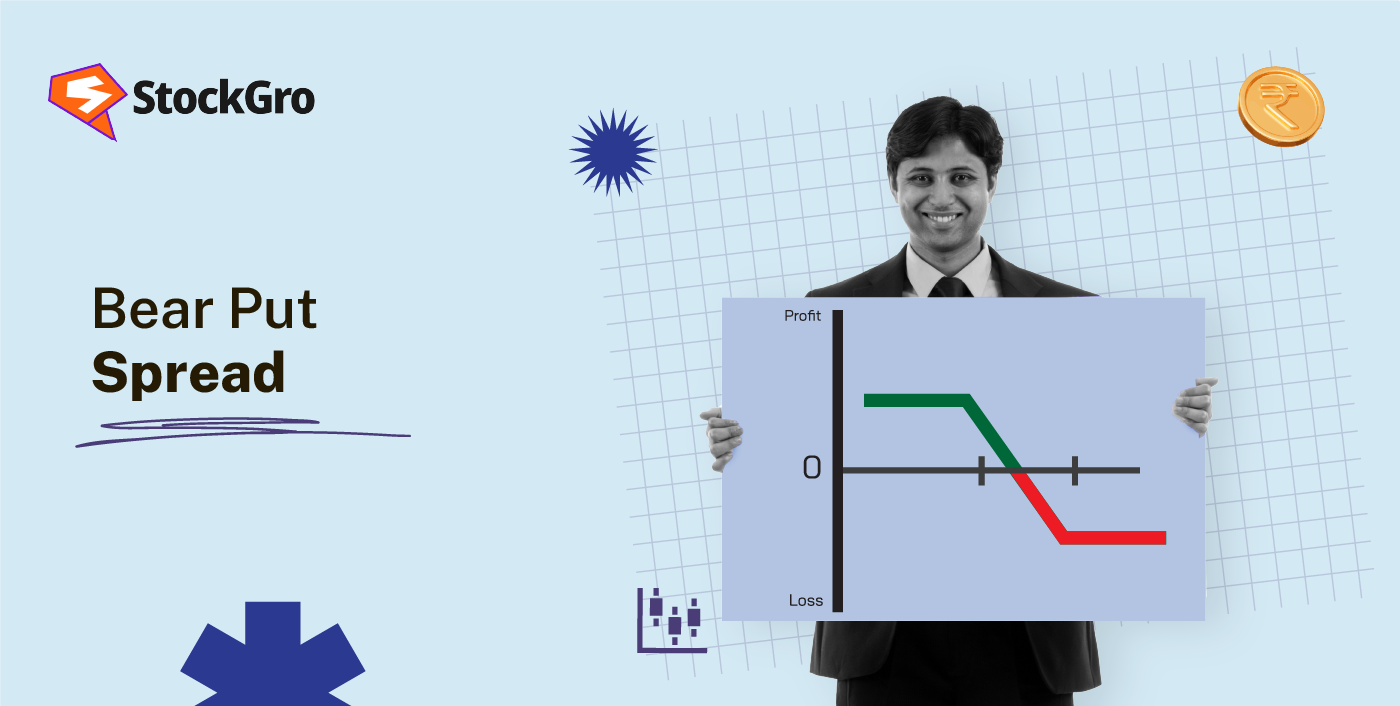
When you start trading, be it stocks, forex, commodities, or cryptocurrencies, you will be acquainted with the term, open position in trading. It defines any open, unclosed trade. This is prone to fluctuations in the market, so that it can fetch profits until the time it is closed or result in losses.
It is important that every trader comprehends what an open position is, how it functions, and how to deal with such open position in trading effectively. This information guides the making of informed decisions, risk management, and enhancement of overall trading performance.
What is Open Position?
An open position is a trade that has been initiated but ongoing in the market not yet closed by an opposing trade. Simply, an open position in trading is where you buy/sell a security and you do not close the trade.
The worth of an available position varies continuously as market quotations vary. No profit or loss is realised until you close it. For example:
- If you buy 100 shares of a company and still hold them, that’s an open position.
- If you sell a currency pair in forex and have not bought it back, that’s also an open position.
The job of a position may last a matter of seconds in day trading or months in long-term buying, selling, recovering, or investing years and even decades, depending on your method.
Types of Open Positions
There are different ways to categorise open position in trading based on the type of trade and market movement.
1. Long Position
A long position reflects the situation when you purchase an asset at the price you believe will increase in the future. As an illustration, you purchase gold at ₹5700 per gram, and you own it because you anticipate its price to be ₹6000 per gram. When the price increases, then you will have an opportunity to sell at a profit.
2. Short Position
A short position is a position where you have received an asset on credit (borrowed it), with the intent of taking advantage of an increase in asset price by selling. An example of this would be to short a stock at a price of ₹1200 to purchase it back at ₹1100 to gain ₹100 per share.
3. Hedged Position
There are cases of traders ensuring that the positions taken in positions are opposed to ensure risk. As an illustration, taking a long exposure in Nifty 50 futures and a short in Bank Nifty futures in order to mitigate potential market fluctuations.
4. Leveraged Position
This entails borrowing money from a broker to enter a bigger position than you can buy with your account balance. Suppose that you put ₹50,000 in your account and the leverage is 5x, so essentially you can open a (₹2,50,000)- worth position. This may multiply profits, but also increases the losses that it may incur.
Long vs Short Positions
| Feature | Long Position | Short Position |
| Ownership | You own the asset | You owe the asset (borrowed from a broker) |
| Profit Scenario | Price rises | Price falls |
| Common Use | Traditional investing | Active trading strategies |
| Risk Exposure | Limited to the amount invested | Potentially unlimited if price rises sharply |
Example: If you buy 100 shares of a stock at ₹500 (long position) and the price rises to ₹550, you earn ₹50 per share. If you short the same stock at ₹500 and it drops to ₹450, you gain ₹50 per share.
How Open Positions Work
1. How They Are Created
An open position in trading is created the moment you execute a buy or sell order in the market. For example:
- Buying IND/USD in forex creates a long open position.
- Selling crude oil futures creates a short open position.
2. How They Are Managed
Once open, a position requires monitoring and potential adjustments. Traders may:
- Move stop-loss orders to protect profits.
- Add to the position if the trend is favourable.
- Reduce the position size to limit exposure.
3. How They Are Closed
Closing a position involves taking the opposite action:
- To close a long position, you sell the asset.
- To close a short position, you buy back the asset you sold.
When closed, any profit or loss becomes realised and is reflected in your account balance.
Risks of Holding Open Positions
Holding open position in trading exposes traders to various risks. Here are some risk management strategies to consider:
1. Market Risk
You can lose money because of news releases, the release of economic data, or a swing in the market sentiment that brings prices against your trade.
2. Overnight Risk
Suppose you are in a position at the end of market hours, when the market is closed, something may happen, moving the market towards an extreme high or low that may set up a large gap in prices.
3. Margin Calls
In leverage trading, where your account balance is below the required margin level, the broker might give you a margin call that requires you either to add funds or to liquidate the positions.
4. Basics of Risk Management
So as to address these risks:
- Use stop-loss orders to limit losses.
- Avoid over-leveraging.
- Diversify your trades.
- Keep position sizes appropriate to your account balance.
How to Monitor and Close Open Positions
1. Practical Steps for Monitoring
- Monitor the live price chart to track the market’s movement.
- Real-time profit and loss (P&L) monitoring should also be used to make decisions on when to take action.
- You have to be on the lookout for the news of markets, financial results or world events that may impact the value of your asset.
2. Tools or Platforms
- Newer systems, such as MetaTrader, TradingView, Zerodha, or Interactive Brokers, have more detailed dashboards.
- All positions are open and can be viewed immediately, stop-loss/take-profit levels can be modified, and margin usage can be verified.
- Use alerts to be notified when price targets are reached or risk levels are achieved.
3. Steps to Close a Position
- Make a decision regarding whether to close partially or completely, based on the strategy.
- Sell the asset, in case of a long position, and buy the asset, in case of a short position.
- To confirm the closure in your platform so that the trade is no longer open and so that the P&L is recorded.
Open Position vs Closed Position
Let’s understand the open and closed position meaning and their differences below:
| Feature | Open Position | Closed Position |
| Definition | Trade is active and subject to market movement. | Trade has been exited; no further market exposure. |
| Profit/Loss Status | Unrealised (changes with price movement). | Realised (locked in). |
| Risk Exposure | Yes, until closed. | None on that specific trade. |
| Example | Buying gold and still holding it. | Selling gold to lock in your profit. |
Conclusion
The basis of any trading activity is the existence of open position in trading. They represent your outstanding positions in the market and the extent to which you are exposed to price fluctuations. Learning to operate them can allow you to trade more efficiently. Understanding the distinctions between long and short positions, including the risks they carry and the tools available for monitoring, can further aid in this process.
It is not whether you are a day trader who tends to hold a position for a few minutes or a swing trader who is likely to hold a position over a few weeks, but managing risk, being informed and having an exit strategy is critical. An open position in trading can be converted into healthy closed trades by proper planning.
FAQs
An open position is any trade that’s still active and not yet settled. For example, if you buy 100 shares of a stock at ₹500 each, you’ve opened a ₹50,000 long position. The trade remains “open” until you sell the shares. Similarly, if you short-sell crude oil futures at ₹6,500 per barrel, that’s also an open position until you buy them back. Open positions are subject to market movements, which can increase your profits or amplify your losses.
An open position is an active trade that is subject to the market prices. Illustratively, gold purchased at a price of ₹6,000 per gram, and which continues to be in the possession of the buyer is an open position. A closed position is simply you closing that trade, like selling it at ₹6200, realizing a ₹200 per gram profit. Open position in trading are a risk with a possible reimbursement, whereas closed positions close the situation, and your gain or loss is now decided and will not be changed by fluctuations in the price.
Leaving a position open overnight means you face overnight risk from market-moving events while you’re not actively trading. For example, if you hold a ₹1,00,000 long position in Nifty futures, and global markets drop sharply before the next day’s opening, you could start with a gap-down loss. Brokers may also charge overnight funding fees for leveraged positions. While overnight gains are possible, traders often manage such risk by using stop-loss orders or reducing exposure before the market closes.
To exit open position in trading, you simply execute the trade opposite to your initial entry. E.g., you purchased 500 shares of one stock at the price of ₹200 per share ( 200,000 position), and you sell those shares to complete your position. In the case of shorting at ₹250, you repay it (buy back) at the current price. With derivatives, it is possible to terminate futures contracts or options prior to expiry by offsetting. Closing a trade makes your profit or loss final and eliminates any further exposure to the market.

